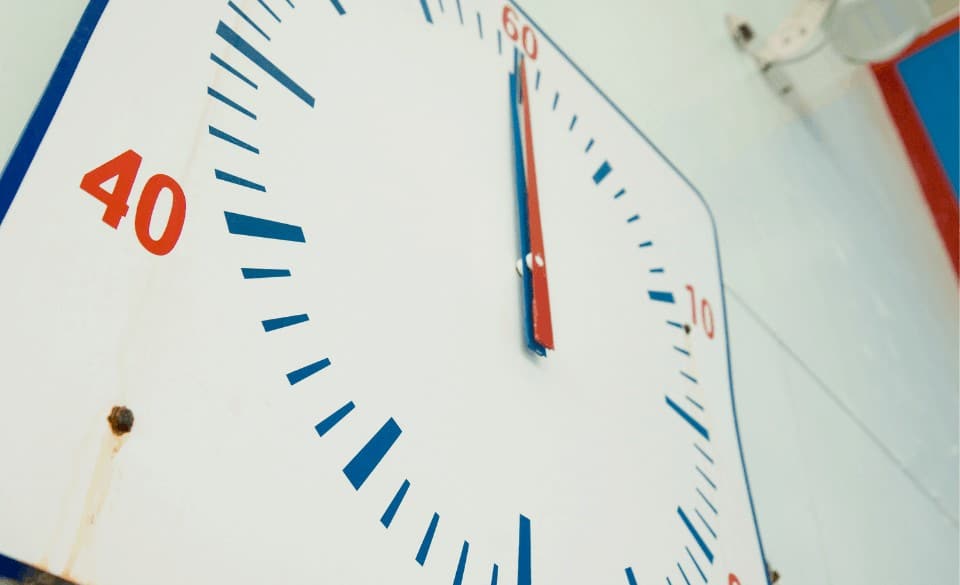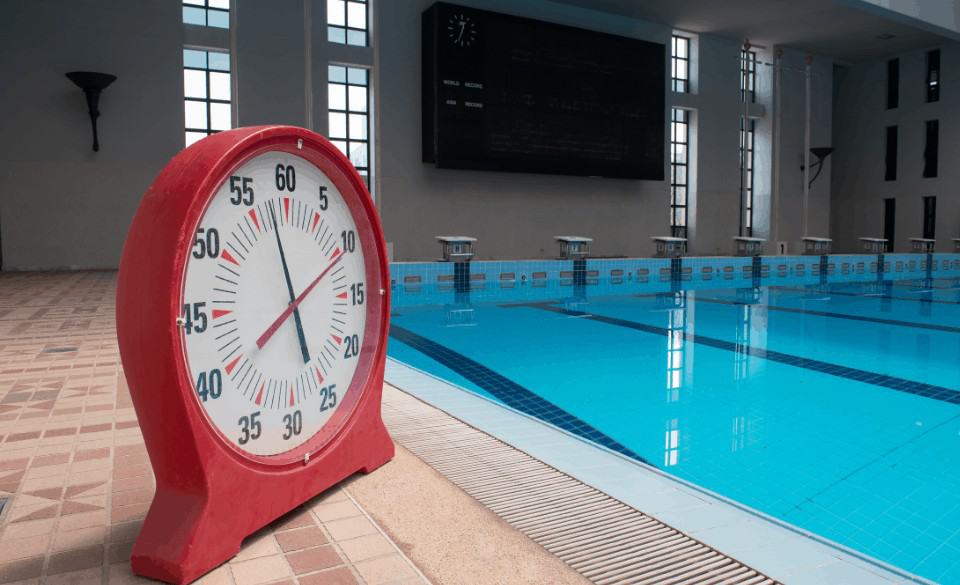
Swimming Pace Clock Worksheet – UPDATED 2021
Page Contents
You might have seen pace clocks hanging on the wall or sitting on the deck at the side of the pool. They can be small, large, analog, or digital and considered to be quite significant for the competitive swimmer. While a lot of swimmers avoid using it, a pace clock is a useful tool for those who want to improve their performance and timing.
Using a pace clock worksheet is a great way to keep track of your progress when swimming sets to prepare for an event or competition.
In this post, we take a closer look at the use of a swimming pace clock worksheet and try to understand how it works. We also provide a comprehensive guide to help competitive swimmers and triathletes measure and improve their speed, fitness, time, and distance.
Swimming Pace Clock Worksheet – What You Should Know?
Using a swimming pace clock helps you monitor your progress during practice and utilize the timings from one training to another.
A swimming pace clock worksheet involves keeping track of your speed and your interval timing. This is done by comparing your repetition times and sets between training sessions. Thus helping you to get a better insight into your form and fitness.
The swimming pace clock worksheet shows you whether your time has improved by telling you if you are swimming a steady pace or the same pace with lesser effort. Such an analysis helps you monitor the effectiveness of your training. If you have not improved your fitness, you can adjust the workouts by including more drills, increasing the interval times, and/or completing shorter sets.
As a competitive swimmer proceeds through training levels, the sets and intervals become more complicated. This is where a pace clock can bring confidence to keep the set moving forward without questioning when you should leave for a repetition.
How Does A Swimming Pace Clock Work?
A swimming pace clock is aimed at helping swimmers add purpose to their training and improve form, speed, and fitness. Most pools contain two pace clocks, one at each end. These are synchronized with each other so that swimmers can track their time at both ends of the pool. The clock runs continuously to allow swimmers to keep track of the swim time and intervals.
An analog pace clock has no hour hand and marks seconds instead of hours. The top of the watch is ‘60’ while the bottom has ‘30’. Some modern pools contain digital pace clocks that display the minutes and seconds in a digital format. In both these types of clocks, the swimmer pays attention to seconds.
A swimming pace clocks lets you keep track of how fast or slow you move through the water. They help monitor the pace and time of the rest intervals as well. Keeping track of the clock adds purpose to the workout and helps develop your skills. Once you learn how to incorporate the pace clock into the training, you can easily start training with a group.
How To Time Swimming? A Complete Guide
The pace clock is used to measure and time rest intervals between repetitions. Intervals are the basis of most training structures. Any training should be divided into efforts of different distances even when you are preparing for a triathlon. Once you learn how to measure the intervals, you can start controlling them better.
Instead of taking two minutes’ recovery between efforts, you can limit this to a 1-minute break and then reduce it to 45 seconds, 30 seconds, and so forth. This can help improve your breathing control and heart rate along with your overall fitness. A common swim set is 10 x 100 which involves swimming 100 meters ten times with a fixed rest period between each repetition.
If you want to find out how fast you are swimming, you can use the pace clock to measure your speed. If your time improves from yesterday, you know that you are progressing on the right path. The perfect way to time yourself is to leave ‘on the top’. This means leaving the wall when the hand is at 60. When you have finished swimming the distance, glance at the clock to find out what your time was.
Best Lap Clocks For Swimming
Here are some of the best recommendations for lap clocks you can use for swimming:
Kiefer Battery Pace Clock
This swimming lap clock is a personal timer in a convenient design. It comes with a large, easy to read face with contrasting red-black markings and hands that improve visibility. It also has a start/stop button on the side and a protective lens. It is battery-operated and comes with a handle for portability.
Colorado Standard Pace Clock
A digital lap clock that helps time your swimming, the Colorado pace clock can program your workouts and display them all the time. It has four LED digits that show minutes and seconds counting up to 59 minutes and 59 seconds. It has a handle and protective splash-proof lens.
Swimming Pool Lap Timer Clock – How To Use?
Being able to use a swimming pool lap timer clock is one of the most important skills of competitive swimming. A lap timer allows the swimmer to achieve control on the pace and intensity when performing intervals.
To start using a lap timer clock, one should first understand the requirements for swimming sets. This includes the distance, stroke, intensity, reps, target time, rest interval, and starting time among other details. Once the swimmer understands the criteria provided by the coach, the lap timer clock is referred for the starting time.
The swimmer starts the set and completes the first repeat after which he looks at the clock to find out how long it took to complete the set. During a rest interval, the swimmer quickly calculates the time from the clock to get a chance to recover and get ready for the next interval.





